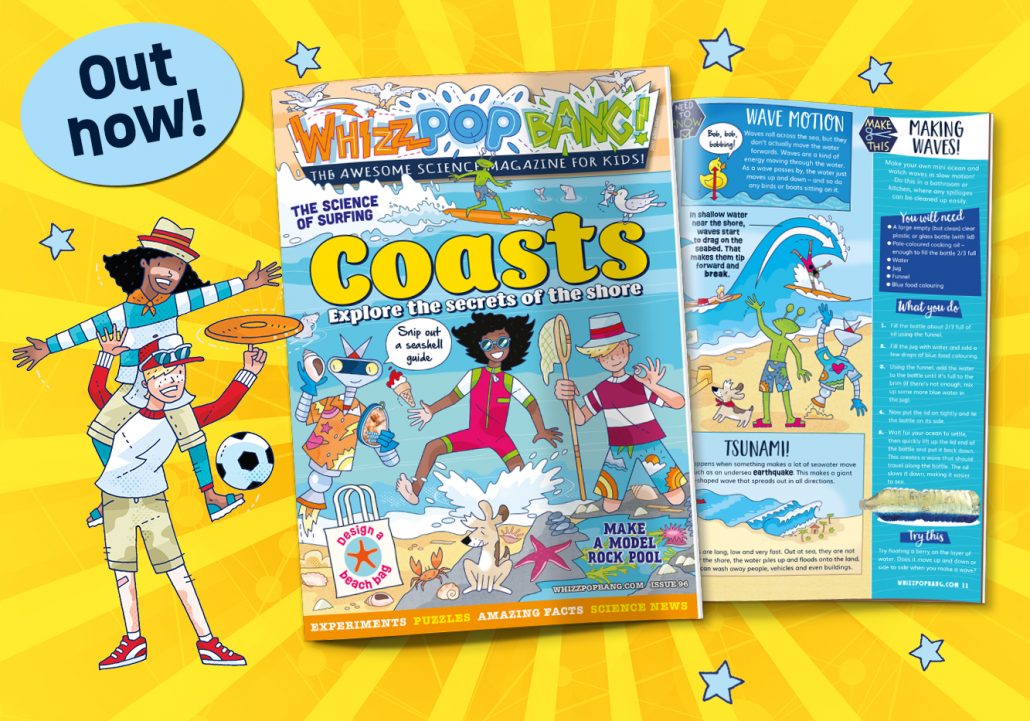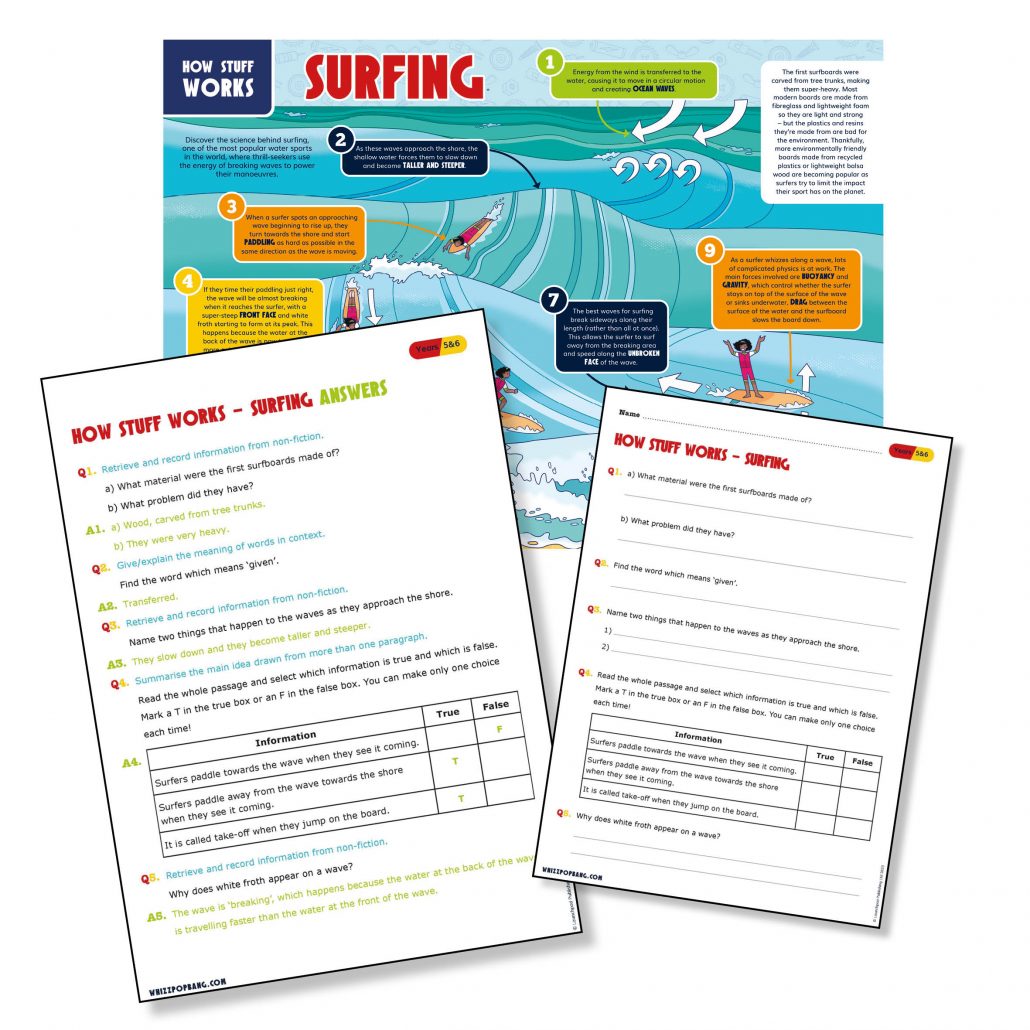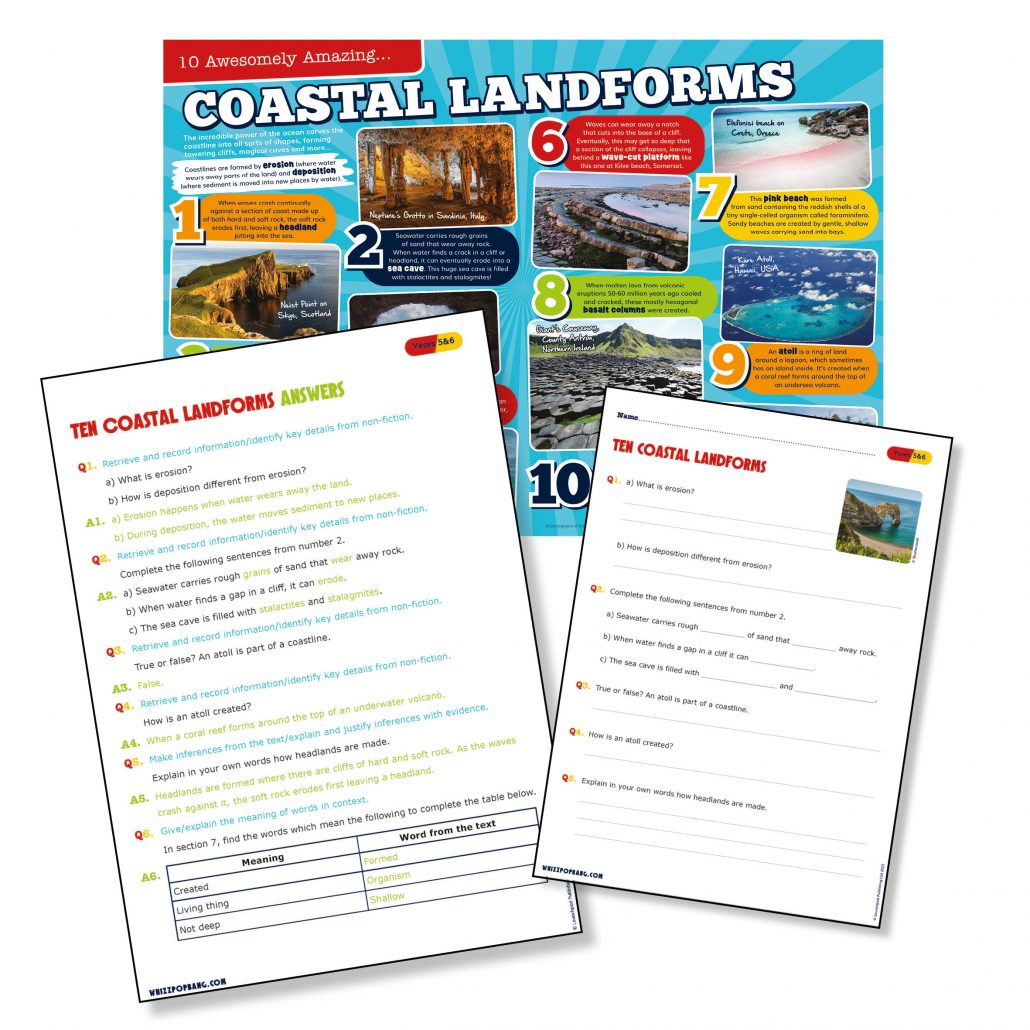Are you teaching the topic coasts and want to include some science? We have a great lesson pack that explains coastal erosion and different types of defences which can be used to protect our coastline.
How is engineering used in sea defences?
Coasts is predominantly a geography-based topic, however it fits with STEAM teaching too. In this lesson pack, we look at different types of engineering used to help stop damage to our coastline. For example, sea defenses such as groynes, sea walls, breakwaters, etc. are built using hard engineering to reduce the damage done to beaches and cliffs by the force of the waves. Using our lesson pack called ‘Hold back the tide’, pupils will experiment by creating a pretend beach and their own waves, then trying to build a sea wall to see if it can stop the sand being washed away.
How will the Whizz Pop Bang lesson produce sticky knowledge?
In this lesson, pupils will create a 3D beach scene and will be working through trial and error when building their sea defence. This will encourage pupils to ask questions and adapt their own engineering until it works. By physically creating the model, this will make the lesson more memorable so the learning will be accessible for the next lesson, when pupils could be given a budget to plan sea defences for a stretch of coast.

How to evidence the lesson
If your planning isn’t enough evidence, pupils could use the Keynote app on an iPad and record themselves describing their sea defences, explaining how they work and suggesting other defences that could be used. If you need evidence in their books, you could print photos of the models; during morning work the next day, pupils could label and annotate them. This would mean that they go back over their learning from the day before, helping the knowledge to stick.
How to get more science into your reading sessions
Using science texts in guided reading or whole-class reading sessions is an easy way for children to delve further into the subject matter and acquire more knowledge. Here are the reading comprehensions that link with this topic:



Whizz Pop Bang magazine and teaching resources are brilliant for enhancing your school’s science teaching:
- We provide downloadable science lesson plans, PowerPoint presentations, hands-on investigations and science reading comprehensions written by primary school teachers.
- Whizz Pop Bang teaching resources link to the National Curriculum, ensuring correct coverage.
- All of our resources are year group specific, ensuring progression between the years.
- We make cross-curricular links to other subjects, such as English, Maths, History, Geography, Art, Design and Technology and PSHE.
Prices from as little as £197.99 per year for a copy of Whizz Pop Bang magazine through the post each month and whole-school access to our ever-growing library of downloadable teaching resources, with unlimited teacher logins.
We also have individual membership option so teachers and home educators can access all of our amazing downloadable resources for just £20 for the whole year.

